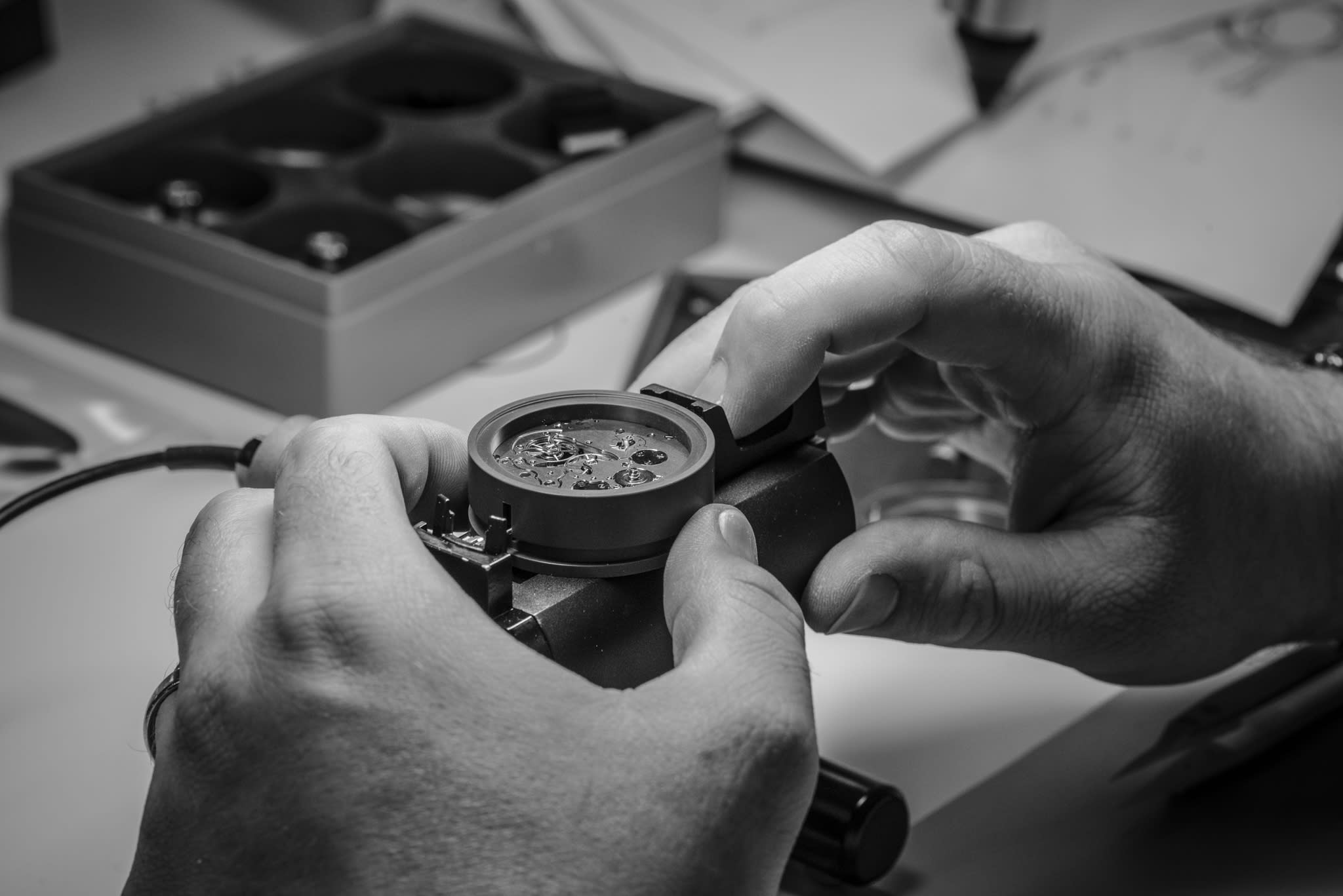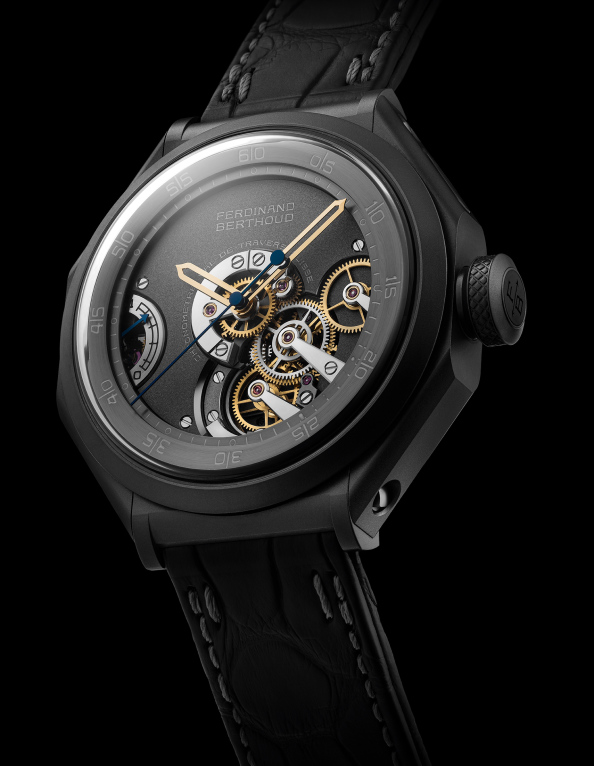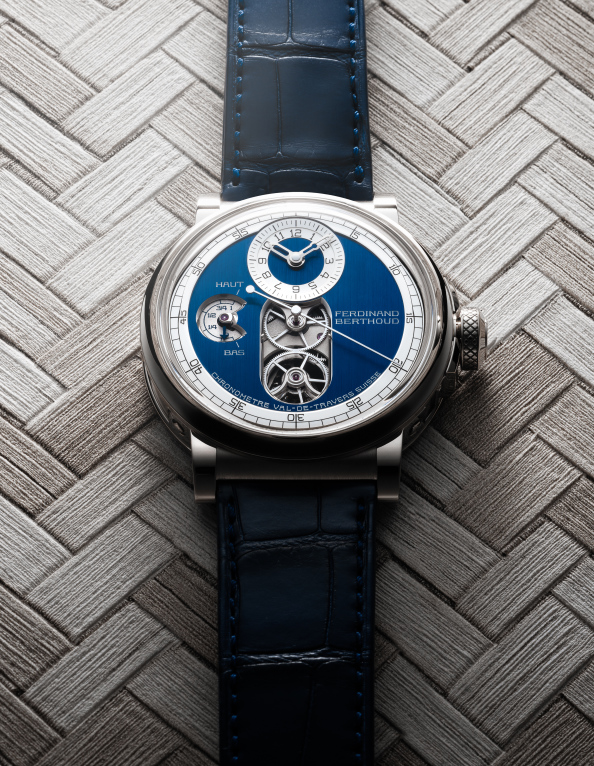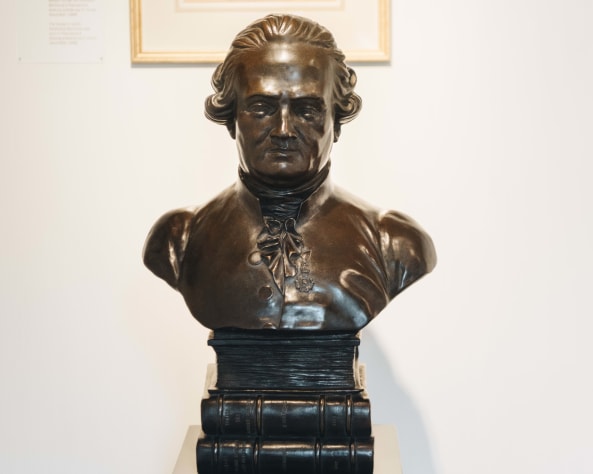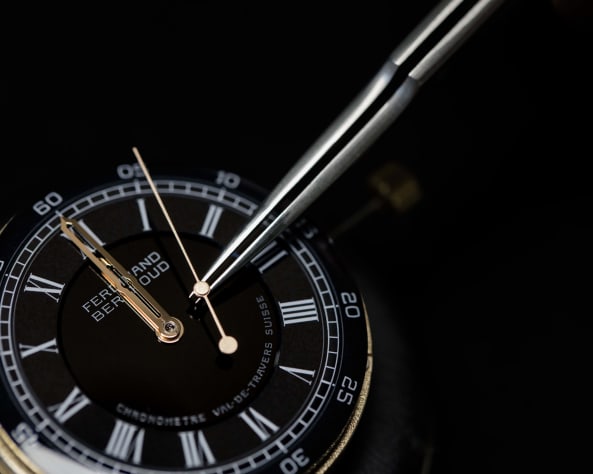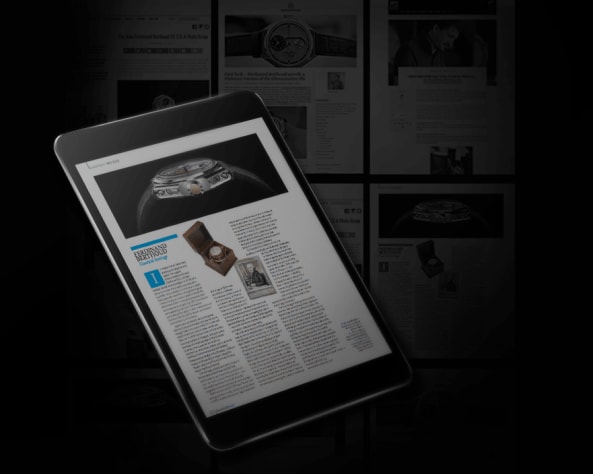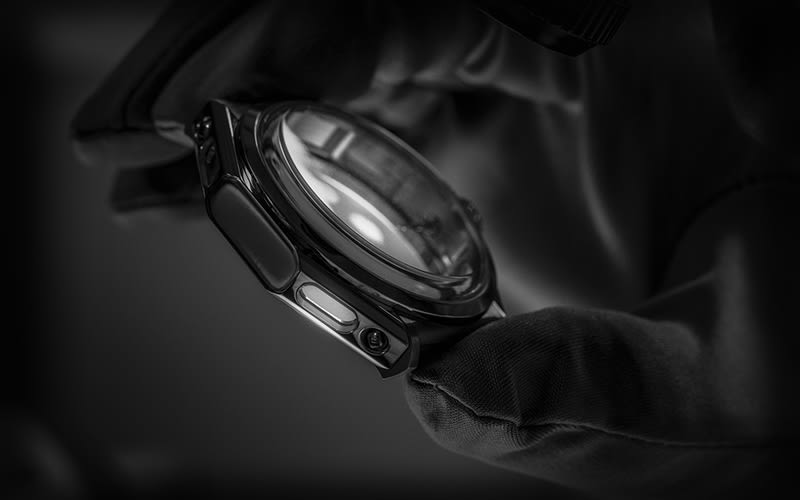
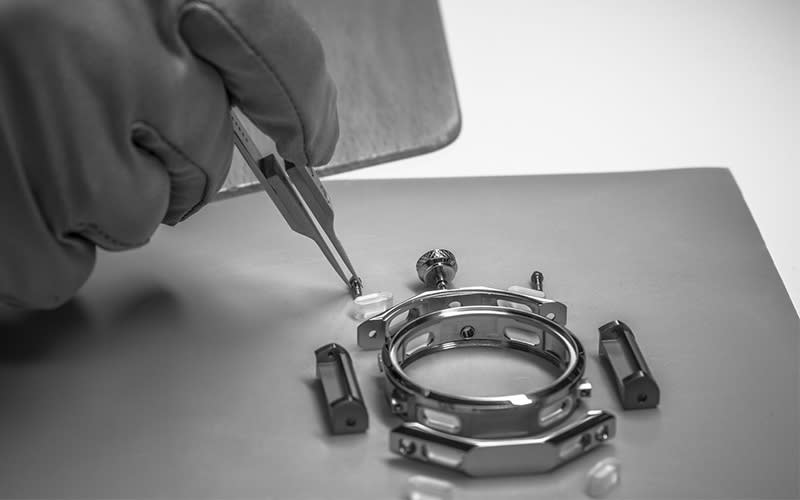
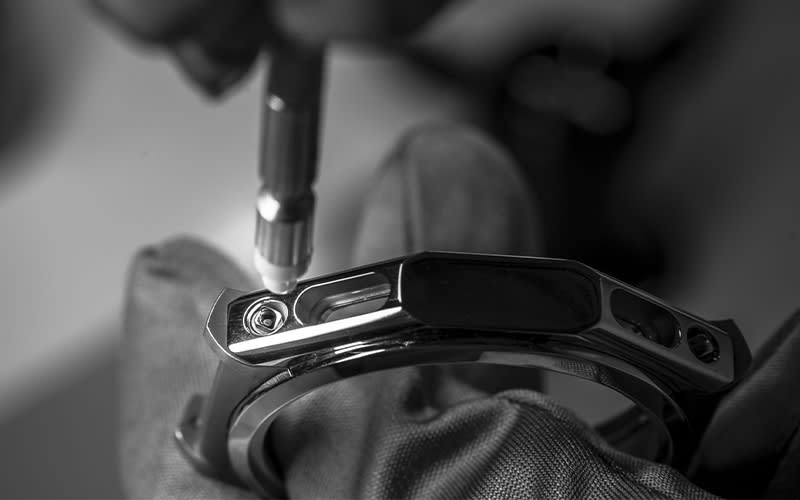
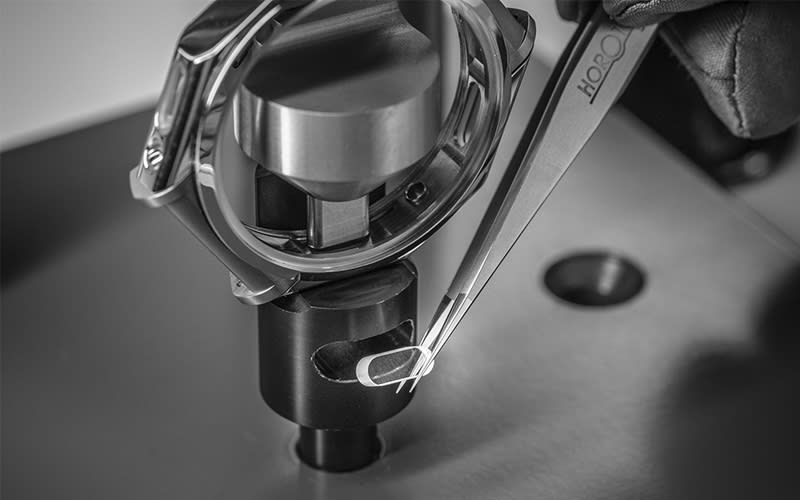
Designed to protect the movement, the case of a Chronométrie Ferdinand Berthoud timepiece is exceptionally intricate, exclusive to the manufacture, and assembled by hand throughout.
The case is the only part of a Ferdinand Berthoud piece that you can touch and feel, caressing its curves and admiring its angles and highlights. It’s also the only part that acquires a patina with age, mirroring its owner’s unique skin patterns as it does so. The Chronomètre FB 1 case is indeed an authentic manufacture creation, and as such, has much in common with the movement it protects.
Firmly grounded in the present day
The most prominent feature of the case is the design itself: the case for the FB 1 model is octagonal in shape. This markedly different, geometrical form has served to establish the collection’s contemporary style and assert its unashamedly unconventional, creative, and unique identity; in this respect, the case is very much a statement of intent.
The art of modular construction
The structure of the case is uniquely intricate, too. Its octagonal shape is achieved by assembling four separate parts. Two lugs located at 12 and 6 o’clock are combined with the side parts at 3 and 9 o’clock to form the eight-sided, octagon shape. Each of these four components has its own distinctive manual finish, sometimes even its own distinctive materials: gold, platinum, bronze, ceramic titanium, or carburised steel. By adopting this modular construction, Chronométrie Ferdinand Berthoud can offer a wide range of finishings.
Each of these components is said to be rapporté, or ‘mounted’. While mounted lugs may be a familiar feature in watches, and have been used here, the Chronomètre FB 1 case is entirely and exclusively made up of such components, each of them fully assembled by hand around a circular container housing the manufacture movement. The distinctive design of this central waterproof cylinder is based on the boisseau copper drums described by Ferdinand Berthoud (1727–1807) in his Traité des Horloges Marines, published in 1773. In addition, this unusual construction deliberately pays tribute to the gimbal suspensions devised to maintain Ferdinand Berthoud’s Sea Clocks in a horizontal position. Chronométrie Ferdinand Berthoud also drew inspiration from these when designing the nuts that secure the lugs to the case.
A cylindrical construction with an illustrious past
The cylinder is a distinctive feature of the FB 1 model. It enables the movement to be constructed vertically, rather than horizontally as it is in almost all conventional watch movements. A set of pillars surrounds the manufacture caliber and its vital organs, including the tourbillon and fusee and chain. Two to four portholes (depending on the model) have been included on the case frame to view the moving organs: as well as offering the aesthetic pleasure of admiring them, this detail is another direct homage to Ferdinand Berthoud’s Sea Clocks: over two centuries ago, they too had similar apertures, allowing the timekeeper officer on a scientific expedition vessel – or indeed the eminent watchmaker himself – to make sure their clocks were working properly.
State-of-the-art assembly
The case architecture is unlike any conventional design used in watchmaking, and as such, is far beyond the reach of usual tools. As a result, Chronométrie Ferdinand Berthoud has itself devised most of the tools used in the manual assembly of the FB 1 model. Indeed, what better way could there be to achieve the high standards one expects of good workmanship? It’s also a nod to heritage: Ferdinand Berthoud himself made his own tools, too, as recorded in his many watchmaking treatises.
No mechanical or industrial equipment is allowed in the manufacture’s workshops; everything is assembled by hand. Even the adhesive usually used for sapphire crystals has been ruled out: the sapphire crystal is set in place by hand – and is waterproof to a depth of 30 metres, as are the side portholes.
Details no-one will ever see
Chronométrie Ferdinand Berthoud has strived to ensure the case of the Chronomètre FB 1 transcends watchmaking standards – not least by concentrating on minute details known only to those who make it. On the concave, curved sapphire crystal, the inside curvature is different from that on the outside, thus minimising surface reflections and distortions. Similar attention has been paid to the finishes on the case’s mounted components – including all the surfaces concealed by the assembly, hand-finished to the same degree of perfection as all the visible ones.
Watch the video
Next article
Episode 5 - The art of precision
